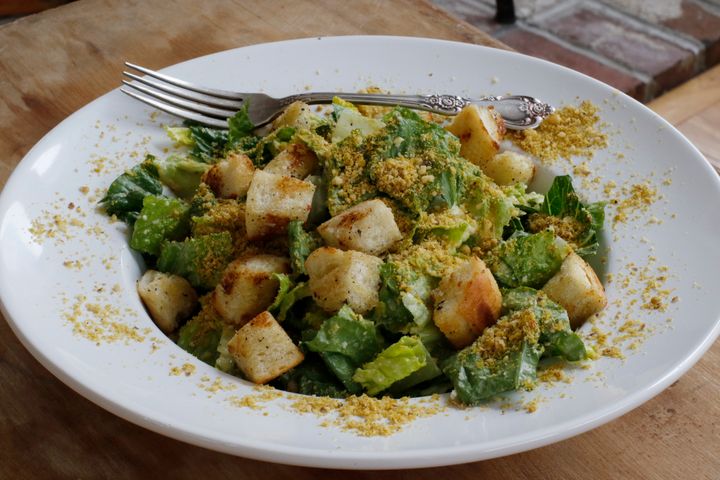
If you’ve ever joined an online vegan group or switched your Monday meal to a meatless one, you may have heard of nutritional yeast, or “nooch.”
The yellow flakes add a cheesy, umami note to food, which is great if you’re dairy-free (or just can’t trust yourself to eat fresh cheese in time to prevent mould).
I learned about them in an attempted animal product-free phase years ago; they’re so addictive that they’ve stayed in my cupboard rotation long after I became a lapsed vegan.
But to be honest, I’d never thought to look up how they’re made until recently ― and it’s not how I thought.
How do they make nutritional yeast?
It shouldn’t have shocked me that the food is grown ― after all, it’s yeast, which I spend weeks trying to raise for my sourdough starter.
But I suppose I’d always thought it was a side product of bread or beer, a little bit like Marmite.
And while it is the same yeast in both loaves and bottles (Saccharomyces cerevisiae), nooch doesn’t happen by accident.
To begin with, the yeast is cultivated in a sterile lab environment. Then, it’s added to a tank or vat where it’s kept at a steady temperature and “fed” molasses, formed from either sugar cane or beet.
This can produce tonnes of yeast in a matter of days, EU food production explainers Food Unfolded says.
“When it comes time to harvest, a centrifuge is used to separate the fermented yeast from its by-products and collect a milky liquid called ‘yeast cream,’” they add (oh good).
Then it’s pasteurised (heated until it’s inactive) ― so no, you can’t use nooch to make a springy slice or a sweet pint.
Mmm(?!)...
Why’s it “nutritional”?
That’s the “yeast” bit covered, but what makes it “nutritional?”
Well, per Healthline, “nooch” can either be fortified, meaning vitamins are added to it, or unfortified, meaning they’re not.
If your nutritional yeast is fortified (most brands are), you’ll get the advantage of whatever they add to it.
Even if it’s not, though, nutritional yeast is “a great source of plant-based protein, B vitamins, and trace minerals.”
The product’s nine amino acids may be especially helpful to those who’ve eliminated animal products from their diet.
Plus, it really does taste good ― it’s definitely keeping its place on my kitchen shelves.
I’ll just choose not to think too hard about the phrase “yeast cream” when I use it...